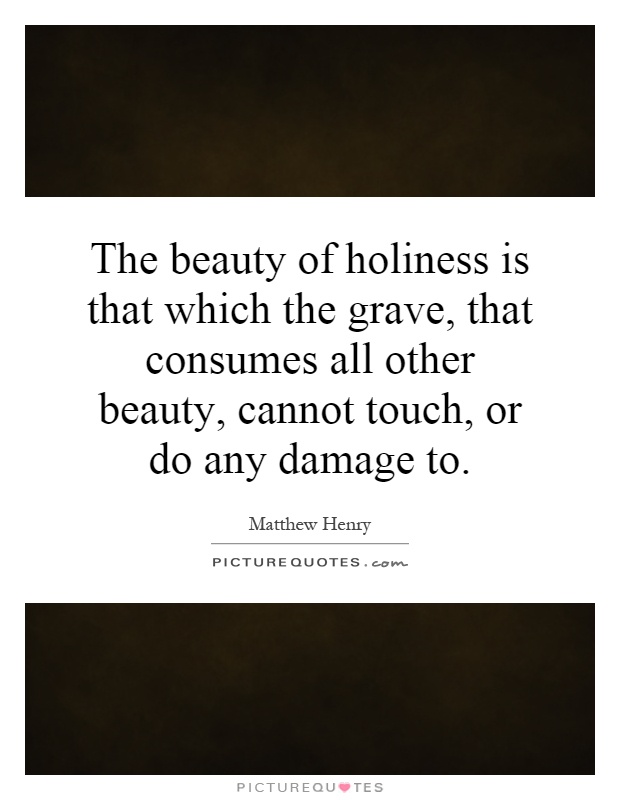The beauty of holiness is that which the grave, that consumes all other beauty, cannot touch, or do any damage to

The beauty of holiness is that which the grave, that consumes all other beauty, cannot touch, or do any damage to
Matthew Henry, a renowned theologian and commentator, once wrote, "The beauty of holiness is that which the grave, that consumes all other beauty, cannot touch, or do any damage to." These profound words speak to the enduring nature of holiness and its ability to transcend the temporal and material world.Holiness, in the Christian tradition, is often associated with purity, righteousness, and moral excellence. It is the state of being set apart for God and living in accordance with His will. The beauty of holiness lies in its ability to transform and elevate the human soul, making it more like God and less like the fallen world. It is a beauty that is not dependent on outward appearances or fleeting pleasures, but on the inner qualities of the heart and mind.
The grave, as a symbol of death and decay, is the ultimate equalizer. It consumes all that is mortal and temporary, leaving behind only dust and ashes. In the face of death, all earthly beauty fades and withers away. However, the beauty of holiness remains untouched and untarnished by the ravages of time and mortality. It is a beauty that is eternal and unchanging, rooted in the divine and transcendent.
Matthew Henry's words remind us that true beauty is not found in the things of this world, but in the spiritual and moral virtues that reflect the character of God. The beauty of holiness is a beauty that shines forth from within, radiating light and goodness to all who encounter it. It is a beauty that inspires awe and reverence, drawing us closer to the source of all beauty and goodness.












 Friendship Quotes
Friendship Quotes Love Quotes
Love Quotes Life Quotes
Life Quotes Funny Quotes
Funny Quotes Motivational Quotes
Motivational Quotes Inspirational Quotes
Inspirational Quotes